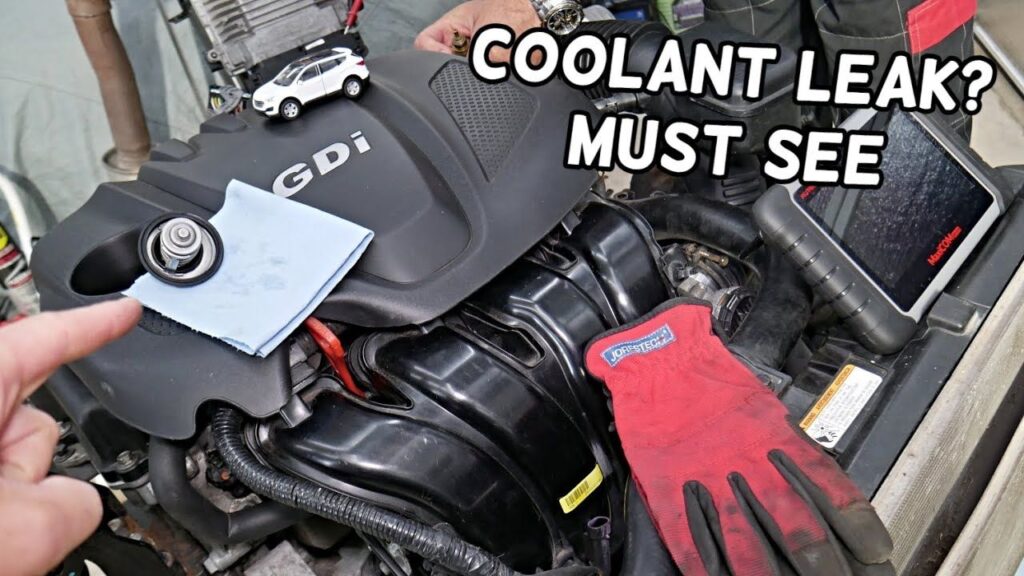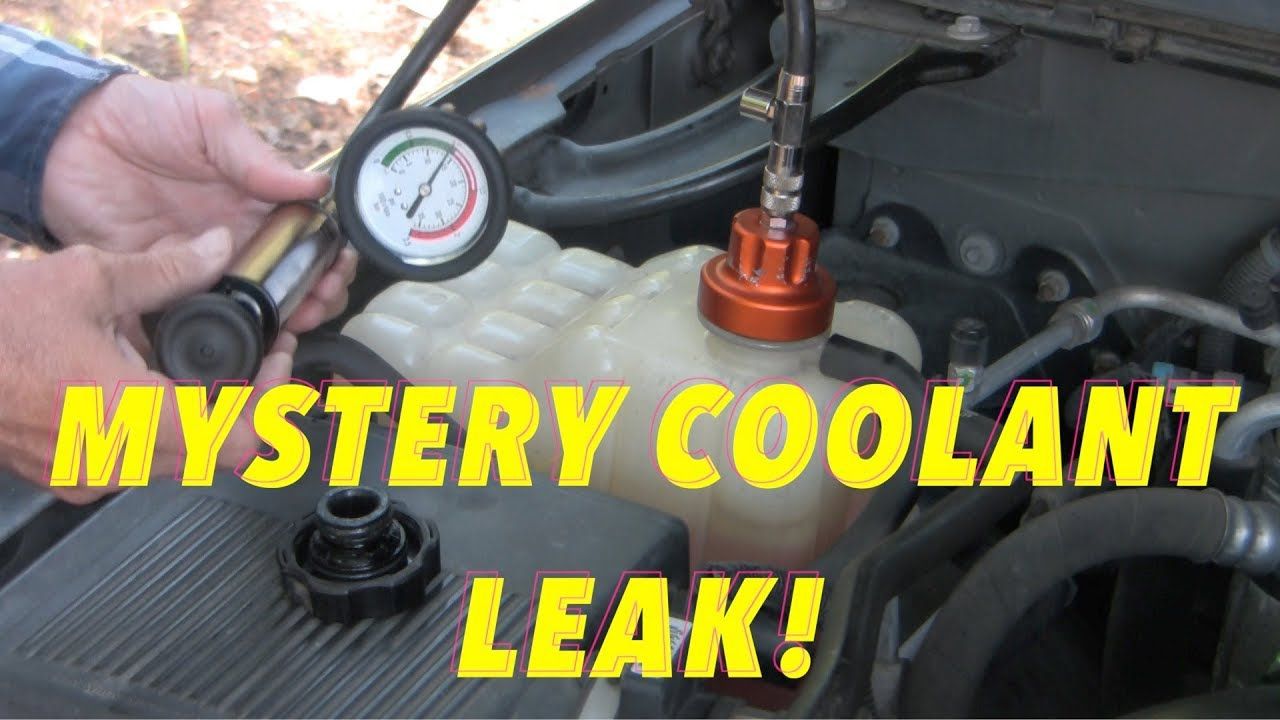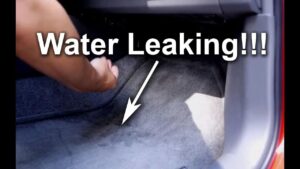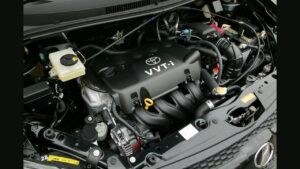A 5.3 engine experiencing a coolant leak at the back signifies potential issues like faulty gaskets, cracked cylinder heads, corroded heater cores, water pump failures, or rare engine block cracks. Proper diagnosis through visual inspection, pressure testing, and coolant analysis is crucial for effective repair and preventive maintenance, ensuring engine longevity and performance.
The Cooling System
Before diving into the specifics of a coolant leak, it’s essential to understand the role of the cooling system in an engine. The cooling system regulates the engine’s temperature to prevent overheating, ensuring optimal performance and longevity. Heat is absorbed by coolant, a solution of water and antifreeze, and released through the radiator when the engine runs.
Signs of a Coolant Leak
Identifying a coolant leak is crucial for timely intervention to prevent engine damage. Common signs include:
- Puddles of coolant beneath the vehicle
- Visible coolant dripping from the engine
- Overheating engine
- Low coolant level in the reservoir
- The sweet smell of coolant inside the cabin
5.3 Leaking Coolant Back Of Engine
A 5.3 engine with a coolant leak at the back demands immediate attention to prevent potential damage. Causes may include faulty gaskets, cracked cylinder heads, corroded heater cores, or water pump failures. Swift diagnosis via visual inspection, pressure testing, and coolant analysis is vital.
Once identified, appropriate repairs, such as gasket replacements or cylinder head repairs, must be promptly undertaken. Regular maintenance, including coolant flushes and inspections, helps prevent leaks and ensures engine longevity. Trusting a qualified mechanic for diagnosis and repair is advisable, safeguarding the engine’s performance and reliability.
Causes of a Coolant Leak at the Back of the Engine
Several factors can contribute to a coolant leak at the back of a 5.3 engine. Let’s explore some potential causes:
Faulty Gaskets: Leaking gaskets, such as the intake manifold or head gasket, allow coolant to escape the engine. Over time, gaskets can deteriorate due to heat and pressure, leading to leaks.
Cracked Cylinder Head: A cracked cylinder head can result from overheating or excessive stress on the engine. A crack near the back of the engine can allow coolant to seep out, leading to a leak.
Corroded Heater Core: The core behind the engine can corrode over time, causing coolant to leak. Corrosion often occurs due to old coolant or contaminated water in the cooling system.
Failure of the Water Pump: The water pump pumps the engine’s coolant around. A malfunctioning water pump, especially at the back of the engine, can lead to coolant leaks.
Cracked Engine Block: In rare cases, a cracked engine block can allow coolant to leak. This severe issue typically requires extensive repairs or engine replacement.
Diagnosing the Coolant Leak
Proper diagnosis is essential for effectively addressing a coolant leak. A systematic approach can help pinpoint the source of the leak:
Visual Inspection: Start by inspecting the engine and cooling system for signs of leakage. Look for puddles or stains beneath the vehicle and check for wet spots or drips on the engine components.
Pressure Test: A cooling system pressure test can help detect leaks by pressurizing the system with air or coolant. This test can identify leaks that may not be visible during a visual inspection.
Coolant Analysis: Analyzing the coolant for contaminants or signs of corrosion can provide insight into the health of the cooling system. Coolant that appears rusty or contaminated may indicate underlying issues.
Solutions for Fixing a Coolant Leak

Once the source of the coolant leak is identified, appropriate measures can be taken to address the issue. Depending on the cause of the leak, solutions may include:
Gasket Replacement: If faulty gaskets are the culprit, replacing them with high-quality replacements can resolve the leak. Proper installation and torque specifications are essential to prevent future leaks.
Cylinder Head Repair: Repairing or replacing a cracked cylinder head may be necessary to stop the coolant leak. Professional machining and sealing techniques can restore the integrity of the cylinder head.
Heater Core Replacement: Replacing the component with a new one is the most effective solution in cases of a corroded heater core. Flushing the cooling system before installation can help prevent future corrosion.
Water Pump Replacement: A malfunctioning water pump should be replaced promptly to prevent further coolant leaks and engine damage. Opt for a high-quality water pump from a reputable manufacturer.
Engine Block Repair: Repairing a cracked engine block is complex and costly. Possibilities include welding, epoxy sealing, or engine replacement, depending on how much damage has been done.
Preventive Maintenance Tips
Regular maintenance is key to preventing coolant leaks and ensuring the engine’s longevity. Here are some preventive measures to consider:
- Follow the manufacturer’s recommended maintenance schedule for coolant flushes and replacements.
- Use high-quality coolant and distilled water to prevent corrosion and contamination.
- Inspect hoses, gaskets, and other cooling system components for signs of wear or deterioration regularly.
- Monitor coolant levels and address any leaks or abnormalities promptly to prevent overheating.
Conclusion
5.3 Leaking Coolant Back Of Engine, A coolant leak at the back of a 5.3 engine can be a concerning issue that requires prompt attention. By being aware of the possible reasons and putting the right remedies in place, vehicle owners can effectively address coolant leaks and maintain the health of their engines. Leaks must be avoided, and the cooling system must operate dependably through routine maintenance and preventative actions. Consulting a qualified mechanic or technician is advisable if you need help diagnosing or repairing a coolant leak. With proper care and attention, coolant leaks can be resolved, allowing drivers to enjoy the performance and reliability of their vehicles for years to come.
FAQ
What Would Cause a Coolant Leak at the Back of the Engine?
The most common cause would be a welch plug rusted through or a leaking head gasket. I would also check any heater pipes running behind the engine.
Why is My Coolant Leaking From My Engine?
5.3 Leaking Coolant Back Of Engine, Coolant hoses and gaskets weakened over time are usually the source of coolant leaks, but there are several other potential causes, too. If your coolant is leaking from the water pump, it could mean that the impeller blades or shaft seal have worn down.
Can a Coolant Leak Destroy An Engine?
Your engine’s cooling system is crucial in preventing overheating and freezing, and when coolant leaks occur, they can lead to costly repairs or even engine failure. Don’t let a coolant leak leave you stranded on the side of the road!
What is the Yellow Fluid Leaking From the Back of My Car?
You see a coolant leak if you see a pink, yellow, or green leak. There are various places in your car’s cooling system where coolant leaks. It is not a good idea to ignore a coolant leak since it can eventually cause the engine in your automobile to overheat.
Why is My Car Losing Coolant But Not Overheating?
A radiator hole or a leaking hose could be the cause. Solution: Inspect your hoses for any leaks of coolant. Replace the hose(s) if coolant is seen to be pouring out of them. If you discover that your thermostat is leaking coolant, it’s an easy fix.




